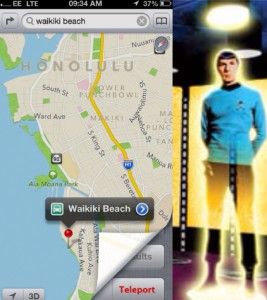We believe that a person centred approach is important when supporting Neurodivergent people and encourage our clients to embrace their Neurodivergence, Autism and ADHD. In this article, A GP, psychologist, nutritionist and fitness instructor give their advice on how to live healthily and happily with ADHD and autism
Neurodiversity
Mind Wandering and ADHD
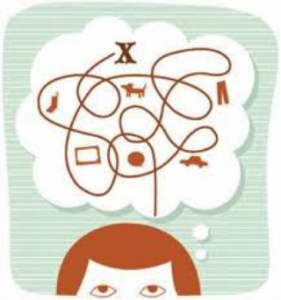 As the song goes…
As the song goes…
“‘Cause I’m a wanderer, yeah a wanderer
I roam around around around, around, around”
Interesting article on the BBC Radio 4 All in the Mind Programme on ADHD and Mind Wandering. UKAAN’s Philip Asherson Professor of Clinical and Molecular Psychiatry at Kings College London and a consultant at the Maudsley Hospital in London talks to Claudia Hammond about recently published research that highlights excessive mind-wandering might be at the core of ADHD. The programme also hears experiences from two teenage girls with ADHD about their experience of mindwandering whilst at school.
Brain.HE is merging with Brain-e
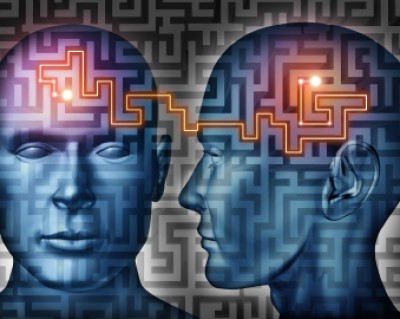
BRAIN.HE was created in 2005 to provide all higher education students and their tutors with a support network and information covering all forms of neurodiversity. The project aimed to improve the Higher Education sector’s response to neurodiversity, including dyspraxia, dyslexia, dysgraphia, Autism Spectrum (A.S.), Attention Deficit (Hyperactivity) Disorder, Tourette’s and dyscalculia.
 The project work was originally funded by the HEFCE (Higher Education Funding Council for England). It was directed by Dr David Pollak, formerly Principal Lecturer in Learning Support and National Teaching Fellow at De Montfort University, Leicester, UK. This site holds information which was previously scattered, as well as new materials applicable to higher education where none existed previously. The majority of the work on developing the site was done by Edward Griffin of the Health & Life Science Faculty at De Montfort University. BRAIN.HE then went on to be funded by the London School of Economics Annual Fund and hosted by the LSE Neurodiversity Team.
The project work was originally funded by the HEFCE (Higher Education Funding Council for England). It was directed by Dr David Pollak, formerly Principal Lecturer in Learning Support and National Teaching Fellow at De Montfort University, Leicester, UK. This site holds information which was previously scattered, as well as new materials applicable to higher education where none existed previously. The majority of the work on developing the site was done by Edward Griffin of the Health & Life Science Faculty at De Montfort University. BRAIN.HE then went on to be funded by the London School of Economics Annual Fund and hosted by the LSE Neurodiversity Team.
The site is in the process of being updated and amalgamated into the NeuroKnowHow website, along with updates and new information to be added in due course.
Introducing Brain-e
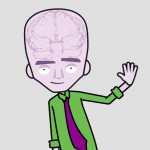
Hi I’m Brain-e,
I thought I’d write a blog post with the aim of introducing myself. I will be posting videos and blog posts with the intention of providing help and news for all things related to neurodiversity. So if you have difficulties with certain things please feel free to send me an email and I will try and help you. I’m currently helping others at the moment and making videos to help them, so come back soon and see what has been posted on this blog and YouTube too.
Here is a little video I made just to say hello, I hope you like it
If you want to contact me directly you can do so via the contact page, just select my name in the drop down menu…
Why don’t you get lost!
Getting lost and disorientated, is something that happens to many people recognised with neurological differences such as: Dyslexia, Dyspraxia, Aspergers and ADHD; but is that such a bad thing?
Being dyslexic and ADHD, getting lost can be a regular occurrence, this doesn’t always bode well when time is not on your side and you have a meeting to get to. So, if I get disorientated, the numerous applications on my iPhone help me get from place to place, whether travelling on foot, public transport or by car. As of yet, I haven’t learned how to fly a helicopter or aeroplane, but “I’m sure there is an app for that”. However, the thing I’m waiting for the most is the Teleportation app. I imagine that I would be able get my surfboard and gear together (already have a water proof iphone case), find Waikiki beach in Honolulu on my maps app and press the red “Teleport button”. I’m not sure what the EE network charge would be for a human body email attachment.
A consideration must be given to how getting lost, at times, can have its pluses: if you take the route that everyone takes, you will be seeing what everyone has seen; getting lost may allow you to discover something that may have been overlooked. I’m sure Christopher Columbus would have agreed, had he not got lost, one could postulate that we may not have Big Macs or Cadillacs (which in my eyes is not a bad thing!).
Just a thought! The next time you get lost, try not to get anxious, allow yourself to become aware of the environment around you, concentrate on your breath to help you relax. You will be seeing something new, from seeing something new and being aware of these new surroundings your brain is making new connections…. and who knows what you might find?
Here is an of interesting article about orientation and the brain.
Spatial orientation and the brain the effects of map reading and navigation
MyBunjee Strap-on for the accident prone and adrenaline junky phones
The other week my wife and I were discussing iPhone insurance, having hers stolen on the London Underground (mothers of small children, looking flustered due to pushchairs and baby accessories are targets for predatory gadget hunters with no scruples or courage).
When the iPhone 5 came out, along with the new iPod Touch, a feature the iPod touch came with was the… iHook, iTag or was it iStrapOn… let me check… 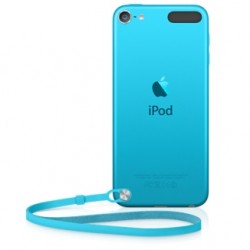 the iPod touch loop… (hmmnn, there already is a product called iLoop). This is great if your an iTouch user, especially since there has been recognition and recommendations for the use of iTouches as a PDA (Portable Digital Assistant) for recipients of the Disabled Student Allowance (DSA). Unfortunately the iPhone 5 didn’t have “the thing that sticks out” that allows for the iLoop attachment. I was looking into alternatives, as I liked the idea of it being attached to me. Some may think that this is a little obsessive, however use of a PDA is essential to help anyone with executive function difficulties to fit into contemporary society.
the iPod touch loop… (hmmnn, there already is a product called iLoop). This is great if your an iTouch user, especially since there has been recognition and recommendations for the use of iTouches as a PDA (Portable Digital Assistant) for recipients of the Disabled Student Allowance (DSA). Unfortunately the iPhone 5 didn’t have “the thing that sticks out” that allows for the iLoop attachment. I was looking into alternatives, as I liked the idea of it being attached to me. Some may think that this is a little obsessive, however use of a PDA is essential to help anyone with executive function difficulties to fit into contemporary society.
Whilst watching Dragons Den last month, I saw something that I thought would help with the not getting it  stolen and more. MyBunjee was a product pitched by duo Emma Jones and Mark Ferguson, which got the interest of the dyslexic dragon Duncan Banotyne and the essential winning bid from dragon Peter Jones (a Telecommunications Business expert). The MyBunjee product is essentially something that stops your expensive and delicate smartphone hitting the deck accidentally. With regard to my own smartphone, I had dropped my iPhone 3GS numerous times on wooden floors, pavements and even face planting the phone as it fell out of my pocket, onto the road whilst putting my kids in the car. The amazing thing is, it has never had crack… good luck I think, as luck is a state of mind.
stolen and more. MyBunjee was a product pitched by duo Emma Jones and Mark Ferguson, which got the interest of the dyslexic dragon Duncan Banotyne and the essential winning bid from dragon Peter Jones (a Telecommunications Business expert). The MyBunjee product is essentially something that stops your expensive and delicate smartphone hitting the deck accidentally. With regard to my own smartphone, I had dropped my iPhone 3GS numerous times on wooden floors, pavements and even face planting the phone as it fell out of my pocket, onto the road whilst putting my kids in the car. The amazing thing is, it has never had crack… good luck I think, as luck is a state of mind.
The product solves the problems of it getting lost, misplaced and even as a theft deterrent. With an ADHD diagnosis, an explanation to working memory difficulties is provided; the constant loss of things like keys, pens and the all essential smartphone, can cause a lot of unnecessary stress and anxiety. With dyspraxia the same can apply about losing things, but you also have the higher risk of accidentally dropping these delicate devices, due to motor difficulties. With the above risk factors and their frequent occurrence, insurance can be a costly, unfortunate yet necessary thing to have.
 The MyBunjee isn’t a new concept. There are of course those springy key-rings that can be attached to a bunch of keys so that:
The MyBunjee isn’t a new concept. There are of course those springy key-rings that can be attached to a bunch of keys so that:
- They are less likely to get lost or misplaced
- They can be lifted to a height that allows them to be used.
It’s the patent-pending rubber band and link to the spring attachment that allows the MyBungee to be adaptable to any PDA type device. They retail around £6 from most websites including postage and packing. I think they are well worth the price as they give you an extra peace of mind, and you can also watch your smartphone do death defying adrenaline junky bunjee jumps, while also looking like an 80s break-dancer or tennis player wearing a head sweatband.

